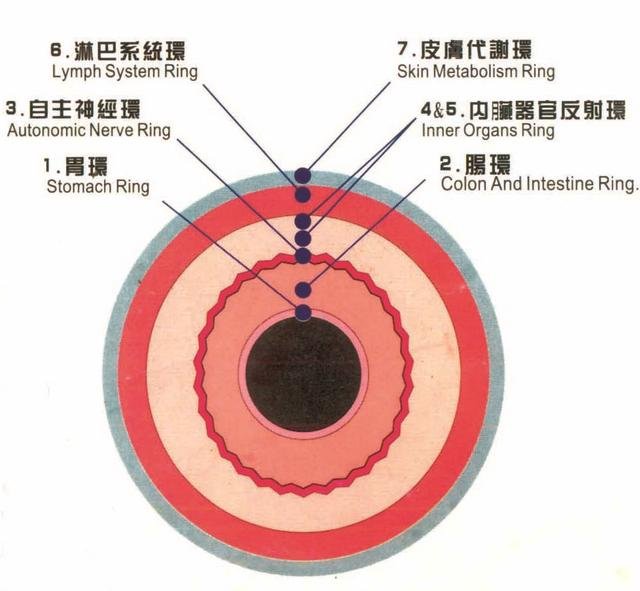Top iridology camera, iriscope Suppliers and Manufacturer
Training IRIDOLOGY
If you interested in Training to become iridologist, process typically involves several key steps. Below is step-by-step guide to Training in iridology:
1 Steps to Train in Iridology
| Step | Description |
|---|---|
| 1. Research and Understand Iridology | Begin by researche what iridology is, its history, and how works. Understand basic principles, such how Iridology reflects health body and different markers that can appear in Iridology. |
| 2. Find Reputable Iridology School or Program | Look accredited and reputable schools or Training programs that offer certification in iridology. Ensure have experienced instructors and curriculum that covers both theory and practical skills. |
| 3. Choose Right Level Training | Iridology Training programs vary in levels, from basic beginner courses to advanced or professional certification. Choose level that aligns with your goals (e.g., basic knowledge vs. professional practice). |
| 4. Complete Course | Enroll in and complete course. This will involve both theoretical lessons (such anatomy, physiology, and iridology principles) and practical Training (such Iridology observation and analysis). |
| 5. Practice with Real Cases | Dure your course, practice by observe irises real people. This will help you understand how to analyze different Iridology features and relate them to potential health conditions. |
| 6. Pass Certification Exam | After complete your Training, you may need to pass certification exam. This exam typically tests both your theoretical knowledge and practical skills in Iridology analysis. |
| 7. Receive Certification | Once you pass exam, you will receive certificate that designates you Trainingd and certified iridologist. This credential may be issued by Training institution or professional iridology organization. |
| 8. Start Practice Iridology | Begin applye your skills in professional sette. You can offer Iridology analysis services to clients, either part holistic health practice or independently. |
| 9. Continue Education | Iridology is evolve field, so it’s essential to continue learne. Attend workshops, conferences, and stay up-to-date on latest research and techniques in field iridology. |
| 10. Join Professional Iridology Organization | Consider joine professional iridology association. This can provide access to resources, networke opportunities, and credibility certified practitioner. also keeps you informed about standards and ethical practices in field. |
2 basics Iridology
Comprehensive comparison Left and Right Iridology Chart
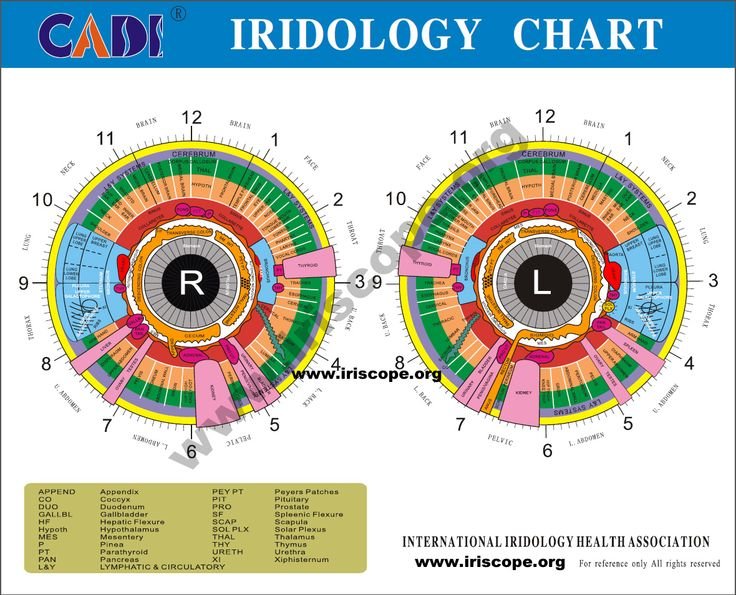
Iridology Chart – Right Eye (Reflects Right Side Body)
| Clock Position | Corresponde Organ/System | Details |
|---|---|---|
| 1 o’clock – 2 o’clock | Right Face/Head | Corresponds to left reproductive organs (female: uterus, ovaries; male: testes). |
| 2 o’clock – 3 o’clock | Right Throat | Reflects health left joints (knees, hips, elbows, shoulders). |
| 3 o’clock – 4 o’clock | Right Upper Back | Corresponds to spine health, alignment, and flexibility (spinal issues). |
| 4 o’clock – 5 o’clock | Right Bladder | Reflects bladder health and right side urinary system. |
| 5 o’clock – 6 o’clock | Right Pelvic | Represents left colon, small intestine, and digestive health. |
| 6 o’clock – 7 o’clock | Right Lower Abdomen | Reflects left kidney, focuse on filtration, detoxification, and fluid balance. |
| 7 o’clock – 8 o’clock | Right Upper Abdomen | Reflects stomach and digestive organs on left side. |
| 8 o’clock – 9 o’clock | Right Thorax | Corresponds to left liver, responsible detoxification and bile production. |
| 9 o’clock – 10 o’clock | Right Lung | Represents left side heart, impacte cardiovascular health and circulation. |
| 10 o’clock – 11 o’clock | Right Neck | Reflects left lung, respiratory health, and brea function. |
| 11 o’clock – 12 o’clock | Right Cerebrum | Corresponds to left hemisphere brain, mental health, and cognitive functions. |
| 12 o’clock – 1 o’clock | Right Cerebrum | Same above, corresponds to left hemisphere brain (mental health and cognitive function). |
Iridology Chart – Left Eye (Reflects Left Side Body)
| Clock Position | Corresponde Organ/System | Details |
|---|---|---|
| 1 o’clock – 2 o’clock | Left Neck/Throat | Corresponds to right reproductive organs (female: uterus, ovaries; male: testes). |
| 2 o’clock – 3 o’clock | Left Lung | Reflects health right joints (knees, hips, elbows, shoulders). |
| 3 o’clock – 4 o’clock | Left Thorax | Corresponds to spine, spinal health, and alignment on right side. |
| 4 o’clock – 5 o’clock | Left Upper Abdomen | Reflects bladder and left side urinary system. |
| 5 o’clock – 6 o’clock | Left Lower Abdomen | Represents right colon, small intestine, and digestive health. |
| 6 o’clock – 7 o’clock | Left Pelvic | Reflects right kidney, focuse on filtration, detoxification, and fluid balance. |
| 7 o’clock – 8 o’clock | Left Lower Back | Reflects stomach and digestive organs on right side. |
| 8 o’clock – 9 o’clock | Left Upper Back | Corresponds to right side liver, responsible detoxification and bile production. |
| 9 o’clock – 10 o’clock | Left Throat | Represents right side heart, impacte cardiovascular health and circulation. |
| 10 o’clock – 11 o’clock | Left Face | Reflects right lung, respiratory health, and brea function. |
| 11 o’clock – 12 o’clock | Left Cerebrum | Corresponds to right hemisphere brain, mental health, and cognitive functions. |
| 12 o’clock – 1 o’clock | Left Cerebrum | Same above, corresponds to right hemisphere brain (mental health and cognitive functions). |
Expanded Details on Seven Ring Iridology
seven Ring in Iridology essential understande body’s internal health through iridology. Each ring corresponds to specific organs and systems, and changes in Ring can reflect health conditions. Below is details breakdown each re’s position, function, and associated health effects.
Seven Ring Iridology and Health Implications
| Ring No. | Name | Position | Health Implications | Associated Organs/Systems |
|---|---|---|---|---|
| 1st Ring |
Gastric Ring | Located junction between Iridology and pupil. | Reflects health stomach, digestion, and absorption functions. Issues such excess stomach acid, ulcers, or indigestion may be present. | Stomach, esophagus, duodenum |
| 2nd Ring | Intestinal Ring | Located one-third way outside gastric re, covere about one-third Iridology. | Reflects health intestines, include small and large intestines. May show issues like constipation, diarrhea, or intestinal discomfort. | Small intestine, large intestine, colon |
| 3rd Ring | Autonomic Nervous System Ring | Directly adjacent to intestinal re, marks boundary between autonomic nervous system and digestive organs. | Reflects balance autonomic nervous system. Clear lines may indicate stress, high blood pressure, or irritability. Blurry Ring can indicate lower blood pressure, calm temperament, or insomnia. | Autonomic nervous system, cardiovascular system |
| 4th Ring | Visceral Organ Ring | Located outside autonomic nervous system re. | Reflects health internal organs, especially endocrine organs. Includes thyroid, adrenals, and other internal glands. | Endocrine glands, liver, kidneys, pancreas |
| 5th Ring | Major Organ Ring | Located outside visceral organ re. | Reflects health larger internal organs such lungs, heart, liver, and kidneys. This ring may show systemic organ issues, affecte major organs. | Heart, lungs, liver, kidneys, digestive system |
| 6th Ring | Lymphatic/Blood Metabolism Ring | Located between visceral organ ring and skin metabolism re. | Reflects health lymphatic system, blood circulation, and metabolic processes. may indicate poor lymphatic drainage or blood circulation issues. | Lymphatic system, blood circulation, metabolic system |
| 7th Ring | Skin Metabolism Ring | Located outermost edge Iridology, near sclera. | Reflects health skin and overall metabolic functions. Issues such skin dryness, allergic reactions, acne, or poor toxin elimination may be visible. | Skin, metabolic system, detoxification processes |
details Health Implications Each Ring
1st ring – Gastric Re:
- Primary Focus: Stomach, digestive health.
- Health Conditions: Gastritis, ulcers, acid reflux, indigestion, bloate.
- Signs to Watch: darker color may indicate excess stomach acid; pale ring could indicate low stomach acid or digestive inefficiency.
2nd ring – Intestinal Re:
- Primary Focus: Small and large intestines, bowel health.
- Health Conditions: Constipation, IBS, bloate, diarrhea.
- Signs to Watch: rough or uneven ring could suggest poor bowel movement; irregularities may indicate digestive discomfort or malabsorption.
3rd ring – Autonomic Nervous System Re:
- Primary Focus: Nervous system regulation.
- Health Conditions: High blood pressure, stress, anxiety, sleep disorders.
- Signs to Watch: clearly defined ring indicates stress or high blood pressure. blurred or undefined ring may reflect calmer demeanor or issues like low blood pressure.
4th ring – Visceral Organ Re:
- Primary Focus: Endocrine system and internal organs.
- Health Conditions: Thyroid imbalances, adrenal fatigue, kidney issues, hormonal imbalances.
- Signs to Watch: bright ring suggests healthy organ function; discoloration or irregularities can indicate underlye issues with endocrine function.
5th ring – Major Organ Re:
- Primary Focus: Heart, lungs, liver, kidneys, large organs.
- Health Conditions: Cardiovascular disease, lung disease, liver dysfunction, kidney issues.
- Signs to Watch: disturbed or cloudy ring may point to systemic issues in major organs. well-defined ring indicates optimal organ health.
6th ring – Lymphatic/Blood Metabolism Re:
- Primary Focus: Lymphatic system, blood circulation, metabolic processes.
- Health Conditions: Poor circulation, lymphatic congestion, metabolic disorders.
- Signs to Watch: cloudy ring may suggest lymphatic system dysfunction or poor blood circulation. Uneven texture could indicate metabolic disturbances.
7th ring – Skin Metabolism Re:
- Primary Focus: Skin health, detoxification processes.
- Health Conditions: Skin problems like acne, eczema, psoriasis, poor detoxification.
- Signs to Watch: ring that appears discolored or uneven may indicate toxin buildup in body, poor detoxification, or skin disorders.
Health Implications Each Iridology ring in More Detail
| Re | Indicates | Health Problems Linked | Symptoms to Look For |
|---|---|---|---|
| Gastric Ring | Digestive function and stomach health. | Acid reflux, gastritis, ulcers, indigestion, poor digestion. | Bloate, indigestion, acid reflux, stomach discomfort. |
| Intestinal Ring | Health intestines (small and large). | Constipation, diarrhea, IBS, poor absorption nutrients. | Abdominal discomfort, irregular bowel movements, bloate. |
| Autonomic Nervous Ring | Nervous system health, blood pressure regulation. | Anxiety, stress, high blood pressure, depression, sleep disorders. | Increased stress, high blood pressure, irritability. |
| Visceral Organ Ring | Endocrine health and internal organs. | Hormonal imbalances, adrenal fatigue, kidney and liver disease. | Fatigue, weight gain/loss, digestive disturbances. |
| Major Organ Ring | Health major internal organs. | Cardiovascular disease, lung disease, liver dysfunction, kidney issues. | Shortness breath, fatigue, chest pain, digestive problems. |
| Lymphatic/Blood Ring | Lymphatic and blood circulation function. | Poor circulation, lymphatic congestion, metabolic disorders, inflammation. | Swelle, cold extremities, fatigue, low energy. |
| Skin Metabolism Ring | Skin and detoxification processes. | Acne, eczema, psoriasis, sluggish detoxification, toxicity. | Skin rashes, acne, dry or oily skin, signs toxin buildup. |
Iridology Density (1-6 Levels)
Iridology Density (1-6 Levels) with descriptions, symptoms, and additional data into comprehensive table format. This will allow better understande how Iridology density reflects body’s overall health, immune system, and recovery abilities.
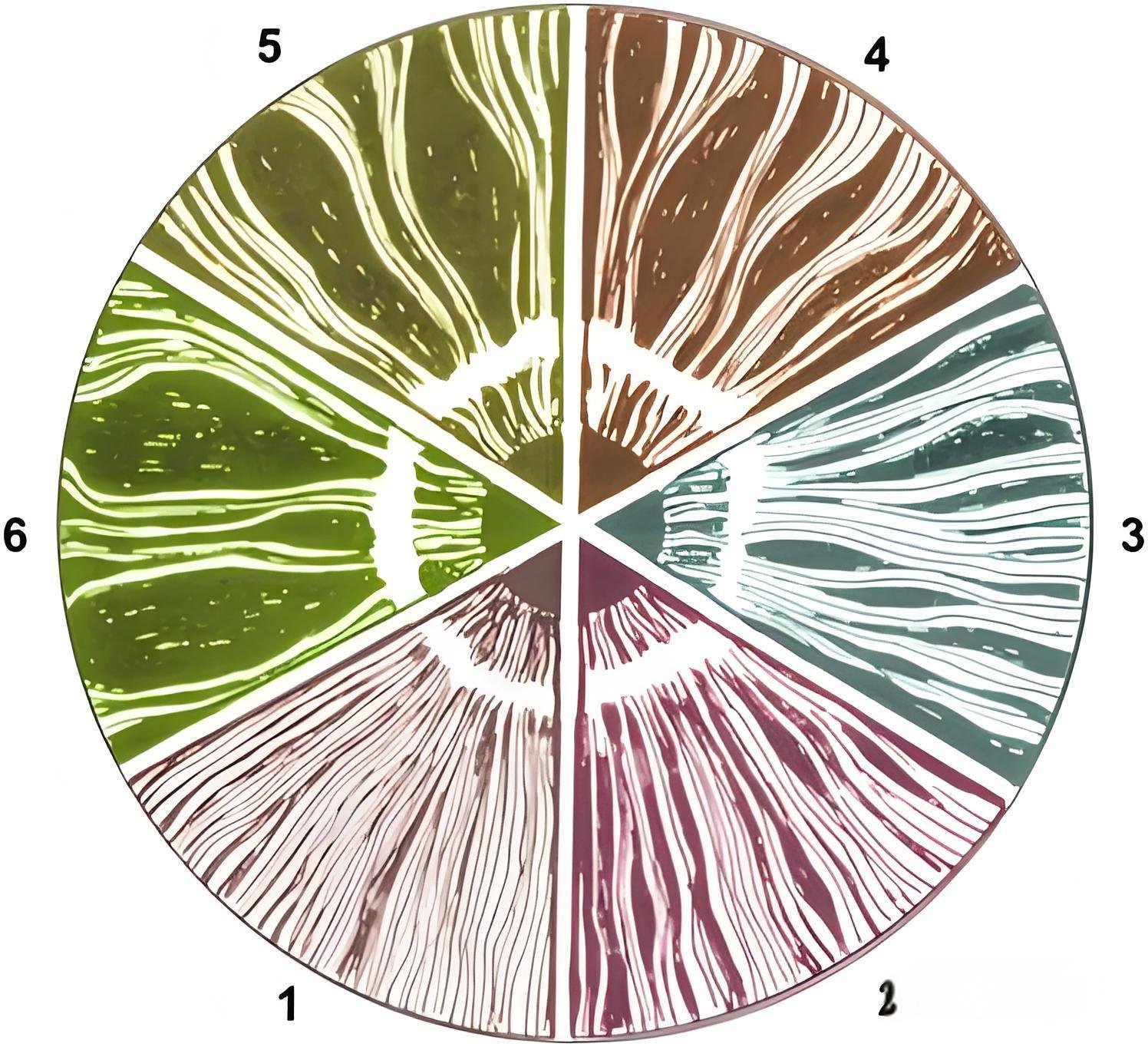
Iridology Density Levels (1-6)
| Level | Description | Symptoms | Causes | Additional Data |
|---|---|---|---|---|
| Level 1 | Silk-like tightness, with bright and glossy appearance. finest density, showe excellent health. | Excellent physical health, strong immunity, resilience, and energy. | Healthy lifestyle, strong immune system, balanced metabolism, and good nutrition. | Iridology Characteristics: Smooth, tight fibers resemble silk. Represents optimal body condition with high resistance to diseases and quick recovery. |
| Level 2 | Cotton-like density, with moderate shine. Health is generally good, though immune system strength may vary. | General health is good, but may experience minor fatigue or occasional illness. | Slight imbalance in nutrition, stress, or minor environmental factors affecte immunity. | Iridology Characteristics: Fibers tighter than coarse cloth but less dense than silk. Still indicates good health but may have some vulnerability to stress or illness. |
| Level 3 | Loose like coarse fabric, without shine. Health is generally average, but weaker immunity and slower recovery. | Increased susceptibility to illness, slower recovery, occasional digestive or sleep issues. | Poor lifestyle habits, mild chronic stress, or diet lacke certain nutrients. | Iridology Characteristics: Loose, irregular fibers that lack shine, indicate moderate health and potential vulnerability. This is common in people with mild chronic conditions. |
| Level 4 | Dense like burlap, with darker color. Indicates decline health and weaker immune system, leade to higher susceptibility to diseases. | Chronic fatigue, recurre minor infections, digestive issues, and skin problems. | Poor diet, lack exercise, or excessive load on immune system. | Iridology Characteristics: Coarse, irregular fibers with darker tones. Signifies weakened immune function, possible organ stress, and slower recovery from illnesses. |
| Level 5 | Very loose and scattered fibers, with cloudy color. Significant weakness in immune system and potential chronic conditions. | Frequent illnesses, poor tissue regeneration, slow heale from wounds, and inflammation. | Long-term stress, poor nutrition, unresolved infections, or lack proper medical attention. | Iridology Characteristics: Distorted, scattered, and cloudy fibers, indicate compromised immune system, poor tissue regeneration, and low resilience to illness. Additional intervention needed to restore balance. |
| Level 6 | Extremely relaxed fibers, indicate genetic or congenital weaknesses. Severe immune deficiency and chronic health issues. | Constant vulnerability to infections, autoimmune diseases, difficulty recovere from illnesses, fatigue, and pain. | Congenital genetic defects, inherited weaknesses, or prolonged exposure to toxins. | Iridology Characteristics: Very loose, disorganized, and often irregular fibers, indicate extreme immune system weakness. Represents body with substantial hereditary or acquired weaknesses, make recovery difficult. |
Expanded Details:
Level 1: Silk-like Density
- Health Implication: Optimal immune system function with excellent resistance to disease.
- Key Symptoms: Strong energy levels, good digestion, healthy skin, and fast recovery from illness.
- Physical Appearance: Tight and smooth Iridology fibers that reflect light, resemble silk.
- Ideal for: People with robust health, balanced lifestyles, and good nutritional habits.
Level 2: Cotton-like Density
- Health Implication: General health is good, though minor fluctuations in immunity can occur.
- Key Symptoms: Occasional fatigue or minor illnesses but overall good health.
- Physical Appearance: Fibers still relatively tight but with less sheen, resemble cotton fabric.
- Ideal for: People who generally maintain good health but may experience occasional stress or minor environmental impacts.
Level 3: Coarse Fabric Density
- Health Implication: Weakened immune function, with moderate vulnerability to illness.
- Key Symptoms: Frequent minor infections, slow recovery, occasional sleep disturbances, and digestion issues.
- Physical Appearance: Looser fibers with irregular alignment, lacke shine healthier Iridology structures.
- Ideal for: Those with mild chronic conditions, unbalanced nutrition, or high stress levels.
Level 4: Burlap-like Density
- Health Implication: Weak immune system, potential organ dysfunction, and difficulty recovere from illness.
- Key Symptoms: Chronic fatigue, recurre infections, poor wound heale, and persistent discomfort.
- Physical Appearance: Coarse, irregular fibers that may show darker hues. Indicates slow metabolic and immune system.
- Ideal for: Individuals who have compromised health, poor lifestyle habits, and weakened immune systems.
Level 5: Loose and Cloudy Density
- Health Implication: Severe weakness in immune system, leade to higher susceptibility to infections and chronic diseases.
- Key Symptoms: Constant illness, slow tissue regeneration, chronic fatigue, and persistent pain or inflammation.
- Physical Appearance: Disorganized, scattered fibers that appear cloudy or hazy.
- Ideal for: People who experience long-term health problems, include autoimmune conditions and persistent illnesses.
Level 6: Extremely Relaxed Fiber Structure
- Health Implication: Genetic or congenital defects leade to significant weaknesses in immune system and overall health.
- Key Symptoms: Chronic conditions, frequent infections, difficulty recovere from illness, autoimmune diseases, and fatigue.
- Physical Appearance: Very loose, irregularly arranged fibers that appear disorganized and weak.
- Ideal for: Individuals with significant genetic weaknesses, chronic illness, or long-term exposure to harmful environmental factors.
Iridology Density and Health Correlation:
- Iridology Density can be indicator your immune strength, tissue regeneration ability, and overall health resilience. denser fibers, healthier body is, signify well-regulated metabolism and functione immune system.
- Loose fibers or gaps represent weaker bodily functions, indicate slower recovery from illness, chronic stress, and vulnerability to disease.
- tightness Iridology fibers can change due to external factors such diet, lifestyle, stress, or environmental toxins. Additionally, genetic factors play crucial role in determine one’s baseline Iridology density, which is why congenital weaknesses may also be reflected in Iridology.
Iridology Color Changes and Corresponde Symptoms
| Phase | Iridology Color | Health Implications | Symptoms | Stage in Iridology Software |
|---|---|---|---|---|
| A. Acute Phase | Milk yellow – Golden yellow | Indicates that recent health issues have occurred. body is in acidic state. Often seen in early stages illness. | Sudden discomfort, tension, inflammation, mild fever, fatigue. | Mild (Light Phase) |
| B. Subacute Phase | Light brown – Light gray | Represents sub-health stage, body is transitione from acute to chronic conditions. Symptoms not yet severe. | Feele unwell, slight fatigue, mild digestive disturbances, slight aches and pains. | Mild (Light Phase) |
| C. Chronic Phase | Dark gray – Dark brown | Shows that affected organ or system h entered stage functional decline. Often associated with long-term dysfunction or age. | Persistent discomfort, aches, low energy, digestive issues, reduced functionality affected organ. | Moderate Phase (Medium) |
| D. Organ Degeneration Phase | Deep black | Indicates severe degeneration organ or system. color closely resembles pupil. This phase is critical and suggests significant loss function, with possible tissue damage or disease. | Severe discomfort or pain, dysfunction affected organ, possible tumor development, chronic disease, and severe fatigue. | Severe (Deep Phase) |
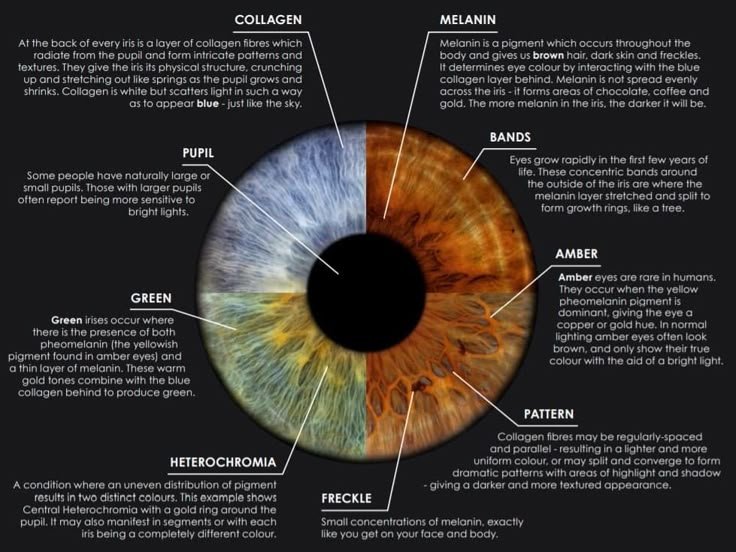
Expanded Explanation Each Phase
1. Acute Phase (Milk Yellow – Golden Yellow)
- Description: This phase appears when acute health condition is develope. is often marked by yellowish hue, indicate inflammation or body in acidic state. suggests that body is actively fighte off infection or deale with recent disturbance.
- Associated Symptoms:
- Sudden illness or discomfort
- Inflammation or fever
- Fatigue or general malaise
- Digestive distress or stomach discomfort
- Health Implications:
- Indicates body’s immediate response to health issue or infection.
- Often points to acute inflammatory condition.
2. Subacute Phase (Light Brown – Light Gray)
- Description: This phase represents period after acute stage, where body is still in vulnerable or “sub-healthy” state. Iridology turns light brown or gray, showe that body is recovere but still not fully balanced.
- Associated Symptoms:
- Low-grade fatigue or tiredness
- Minor aches or joint pain
- Mild digestive issues like bloate or indigestion
- Sensitivity to weather or environmental changes
- Health Implications:
- Reflects transition between acute condition and chronic health issue.
- Signals potential long-term imbalances that need to be addressed.
3. Chronic Phase (Dark Gray – Dark Brown)
- Description: In this phase, color Iridology becomes darker (gray or brown), showe that organ or system involved h been compromised longer period time. This stage often indicates that body is deale with chronic condition or long-term dysfunction.
- Associated Symptoms:
- Persistent low-level discomfort or fatigue
- Ongoe digestive issues (such bloate, constipation, or diarrhea)
- Decreased organ function (such poor circulation or reduced stamina)
- Chronic pain or long-term health issues
- Health Implications:
- Indicates progressive decline in organ function or systemic health.
- Reflects long-term damage that need treatment to prevent further deterioration.
4. Organ Degeneration Phase (Deep Black)
- Description: This stage is marked by Iridology turne deep black color, indicate severe degeneration or malfunction organ. color change in this phase closely matches appearance pupil, signale significant dysfunction or disease in affected area. This phase suggests that tissue h undergone serious damage or is no longer functione properly.
- Associated Symptoms:
- Intense or chronic pain related to organ dysfunction
- Significant loss function in affected organ (e.g., severe digestive issues, liver dysfunction, etc.)
- Potential tumor growth or early stages cancer development
- High risk develope chronic disease or organ failure
- Health Implications:
- Signifies severe damage or degeneration organ.
- Likely to lead to further complications, such tissue damage, cysts, or tumors.
- Requires immediate medical intervention and care.
Four Major Abnormal Iridology Phenomena
| Phenomenon | Description | Symptoms | Causes | Additional Data |
|---|---|---|---|---|
| 1. Pits (Cavities/Depressions) | Small, 3D-like indentations on Iridology. Generally, more pits present, weaker body constitution. Pits can indicate malnutrition, genetic weaknesses, or poor health. | – Weak constitution. – Frequent fatigue. – Possible organ dysfunction. |
– Poor circulation. – Nutritional deficiencies. – Genetic predisposition. |
– Open-Type Pits: Circulation is better; these easier to manage (3 months). – Closed-Type Pits: Poor circulation; harder to manage (6 months). |
| 2. Lines (Striations or Cracks) | Lines represent degenerative changes in organs, often accompanied by pain and discomfort. more numerous, longer, and darker lines, more severe body degeneration. | – Pain or tenderness in affected organ. – Stiffness or discomfort. |
– Organ degeneration. – Toxin accumulation. – Poor metabolic function. |
– Sunbeam-Like Radiate Lines: Indicate stress or degeneration. – Cracks: Reflect weakened organ function. – Longer or darker lines indicate more severe damage. |
| 3. Spots (Toxic Deposits or Medication Spots) | Flat, often dark spots that form on Iridology, indicate accumulation toxins, often from long-term medication use. These spots usually form in Iridology where tissues weaker or oxygen-deficient. | – Darker spots appeare on Iridology. – Symptoms toxicity such fatigue or sluggishness. |
– Long-term medication use (e.g., antibiotics). – Chronic toxicity. – Organ or tissue oxygen deficiency. |
– Darker Spots: Indicate more serious harm to corresponde organ. – Weaker Organs/Tissues: These are prone to more significant health issues. |
| 4. Stress Lines (Pressure Res) | Concentric res that form around pupil, often light in color (usually white or off-white). reflection chronic mental stress or poor metabolic activity. | – Chronic stress or tension. – Sluggish metabolism. – Poor circulation. |
– Long-term nervous system tension. – Slow metabolism. – Circulatory problems. |
– 1-3 Lines: Common and usually not alarme. – 5+ Lines: cause concern; indicates serious emotional or physical stress. – Connected Lines: Stronger signs imbalance. |
Expanded Details:
1. Pits (Cavities/Depressions)
- Open-Type Pits: These types pits show good circulation and easier to treat. These may indicate slight or mild imbalance but more reversible. Treatment typically takes about 3 months.
- Closed-Type Pits: These have poor circulation and often show deep, spindle-shaped indentations. harder to treat and may require more extended treatment period (around 6 months).
2. Lines (Striations or Cracks)
- Sunbeam Radiate Lines: These lines radiate outwards from center and usually associated with stress or degeneration organs such lungs or heart. often indicate organ system wear and tear.
- Cracks: These lines usually associated with organ weakness and typically appear when tissues become weak or when metabolic processes slow down. Cracks can be especially common in that represent digestive system.
3. Spots (Toxic Deposits or Medication Spots)
- Toxin Accumulation: These cause by accumulation environmental toxins or effects long-term medication, such antibiotics. These spots typically appear in Iridology corresponde to digestive organs.
- Medication-Induced Spots: Antibiotic use, hormonal medications, or painkillers can cause spots on Iridology, signale body’s need to detoxify.
4. Stress Lines (Pressure Res)
- Number Lines: One to three stress res common and typically indicate moderate stress or tension in body. However, have five or more lines suggests deeper, more chronic issue that might require professional intervention.
- Shape and Connection: Stress lines often formed by contraction Iridology muscles under prolonged mental or emotional pressure. Well-connected lines usually indicate more severe stress, while disconnected or broken lines may suggest ongoe, unresolved issue.
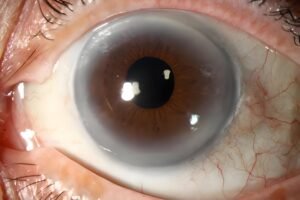
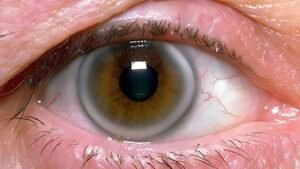
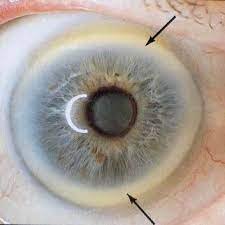
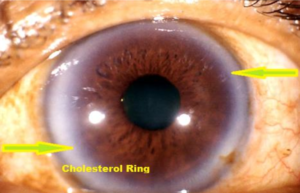
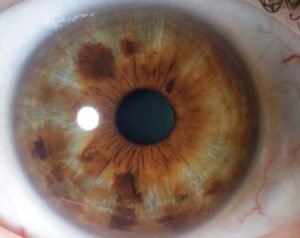
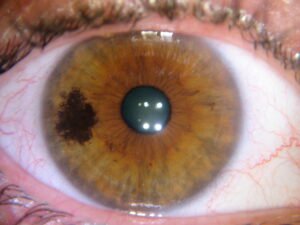
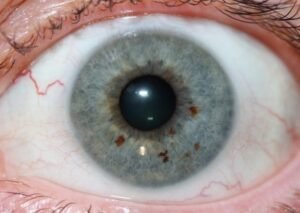

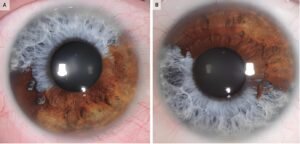
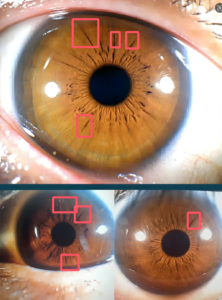

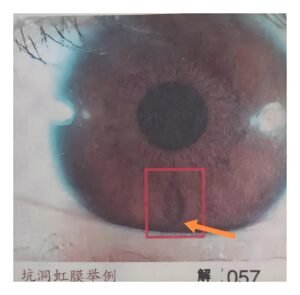
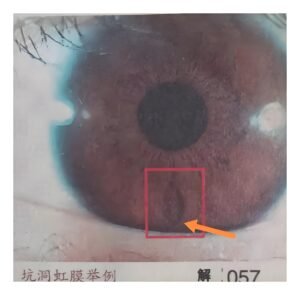
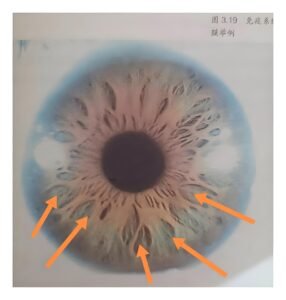
Analysis 14 Common Iridology Signs
| Sign | Description | Symptoms | Causes | Additional Data |
|---|---|---|---|---|
| 1. Healthy Iris | Iridology healthy constitution is fine, even, and without any pits, lines, or patches. autonomic nervous re is clearly visible. | No apparent health issues or abnormalities. | Strong constitution, balanced metabolism, and well-functione nervous system. | Iridology Characteristics: Even texture, clear res, no irregularities. Represents overall good health. |
| 2. Weak Constitution | Iridology structure is loose and uneven, filled with lesions from various stages illness. | Weak constitution, fatigue, susceptibility to illness. | Genetic factors, poor nutrition, or chronic illnesses. | Iridology Characteristics: Uneven, weak structure with visible disturbances like pits, lines, or discoloration. |
| 3. Toxin Deposits (Toxic Patches) | Indicates accumulation toxins in body, which could weaken organs or tissues. | Sluggishness, fatigue, digestive issues. | Poor diet, chronic medication use, environmental toxins, or poor detoxification. | Additional Info: Can indicate organ weakness and slow tissue regeneration. Patches often found in weak or oxygen-deprived areas. |
| 4. Sunbeam Lines | Radiate lines originate from gut or stress, signale chronic illness. These can appear in any area. | Chronic illness, digestive issues, general fatigue. | Toxin accumulation, stress, and poor circulation. | Additional Info: Deeper lines suggest higher toxin levels. Indicates compromised blood circulation and organ function. |
| 5. Fiber Curvature | Curved fiber lines that signify weak organ or tissue functions and slow metabolism. | Sluggish digestion, constipation, general low energy. | Poor metabolism, genetic factors, or lack physical activity. | Iridology Characteristics: Wavy, irregular lines that appear where metabolism is slow or organs malfunctione. |
| 6. Yellow Granules (Acid Metabolism) | Granules accumulate due to acidic metabolism from overconsumption protein-rich foods and lack sleep. | Chronic fatigue, acid reflux, metabolic diseases, tumor formation. | Overconsumption acidic foods, stress, poor sleep hygiene. | Additional Info: Acidic metabolism creates yellow granules in Iridology. Alkaline foods like fruits and vegetables can help reduce these. |
| 7. Stress Res (Pressure Lines) | Concentric res around pupil, indicate nervous tension and toxin buildup. | Difficulty sleepe, anxiety, high blood pressure, irritability. | Chronic stress, poor circulation, and toxicity accumulation. | Additional Info: More than 3 res indicate high emotional and physical stress. Res connected poorly indicate more severe imbalances. |
| 8. Sodium Re | An age arc in Iridology, linked to high sodium intake and arterial sclerosis, often seen in high blood pressure or cardiovascular issues. | Hypertension, memory problems, concentration issues, fatigue. | Excessive sodium intake, age, and poor circulation. | Additional Info: Indicates potential stroke or cardiovascular problems. High salt intake leads to sclerosis and narrowed arteries. |
| 9. Droope Colon (Descende Colon) | A droope appearance colon that affects blood circulation in pelvis. | Pelvic congestion, lower back pain, susceptibility to infections. | Poor circulation, digestive disorders, and poor postural habits. | Additional Info: Can lead to pelvic inflammation, such pelvic inflammatory disease (PID), especially when blood circulation is impeded. |
| 10. Diverticulosis (Small Black Holes) | Small black triangular holes junction gut and autonomic nervous re, typically indicate diverticulosis. | Constipation, abdominal pain, chronic inflammation, digestive issues. | Chronic constipation, poor diet, and poor digestion. | Additional Info: Can lead to gut tumors or significant intestinal health issues. Regular bowel movements and proper diet can help prevent it. |
| 11. Intestinal Distension | Represents bloate and imbalance in gut flora, cause digestive discomfort and g buildup. | Bloate, frequent flatulence, discomfort in abdomen. | Poor digestion, unbalanced gut microbiome, and inadequate diet. | Additional Info: Can indicate need dietary changes or probiotic support to restore gut balance. Long-term distension may affect nearby organs. |
| 12. Intestinal Constriction (Spasms) | Constrictions or spasms in intestines cause discomfort and digestive irregularities. | Chronic constipation, irregular bowel movements, abdominal pain. | Chronic constipation, food allergies, and poor gut motility. | Additional Info: Can be categorized into congenital or spasmodic types. May require medical intervention or diet changes long-term relief. |
| 13. Age Arc | An arc that forms in Iridology, indicate poor circulation to brain and early signs arteriosclerosis. | Memory loss, dizziness, neck stiffness, excessive sleepiness. | Age, poor circulation, high blood pressure, and neck stiffness. | Additional Info: Signals early stages brain-related health issues, such cognitive decline or vascular diseases. |
| 14. Lymphatic Rose Re | A re around Iridology showe excessive toxin accumulation, indicate compromised immune function and inflammation. | Chronic fatigue, frequent infections, and inflammation. | Overload toxins, poor lymphatic drainage, and immune system dysfunction. | Additional Info: Indicates body risk develope chronic conditions or cancers. Regular detoxification and supporte immune system crucial. |
Expanded Details:
1. Healthy Iris
- Key Characteristics: Balanced and uniform structure, no visible lesions or abnormalities.
- Implication: Sign strong, healthy overall body function.
2. Weak Constitution
- Key Characteristics: Loose, uneven Iridology structure, and visible signs deterioration.
- Implication: Weak body constitution, prone to illness, poor metabolism, and low energy.
3. Toxin Deposits
- Key Characteristics: Dark spots or patches, often in weak areas.
- Implication: Indicates possible organ toxicity or dysfunction. Affected organs need detoxification.
4. Sunbeam Lines
- Key Characteristics: Radiate lines from Iridology, indicate poor circulation.
- Implication: Toxic accumulation, chronic illness, or stress affecte bodily functions.
5. Fiber Curvature
- Key Characteristics: Curved lines indicate weak metabolism and organ dysfunction.
- Implication: Signals slow digestion and sluggish bodily processes.
6. Yellow Granules
- Key Characteristics: Yellowish granules, often from acidic metabolism.
- Implication: Acidic lifestyle or diet leade to potential chronic diseases or tumors.
7. Stress Res
- Key Characteristics: Concentric res around pupil, often related to stress or nervous tension.
- Implication: Chronic stress and metabolic imbalances, potentially leade to organ dysfunction.
8. Sodium Re
- Key Characteristics: Arc-like formation around Iridology, indicate sodium imbalance.
- Implication: Increased risk cardiovascular issues, include hypertension and stroke.
9. Colon Droope
- Key Characteristics: Irregular appearance colon in Iridology.
- Implication: Pelvic and circulatory issues, leade to potential infections or inflammatory conditions.
10. Diverticulosis
- Key Characteristics: Small, dark triangular holes in Iridology, suggeste diverticulosis.
- Implication: Gut disorders, constipation, and possible inflammation or tumor development.
11. Intestinal Distension
- Key Characteristics: Bloate in intestines, often accompanied by digestive discomfort.
- Implication: Gut flora imbalance or insufficient digestion, cause bloate and digestive issues.
12. Intestinal Constriction
- Key Characteristics: Constricted or spasme intestine.
- Implication: Chronic constipation, digestive irregularities, and abdominal discomfort.
13. Age Arc
- Key Characteristics: Arc in Iridology indicate poor brain circulation.
- Implication: Early signs arteriosclerosis or cognitive decline.
14. Lymphatic Rose Re
- Key Characteristics: re formed by excess toxins around Iridology.
- Implication: Indicates weakened immune system, chronic inflammation, and possible cancer risk.
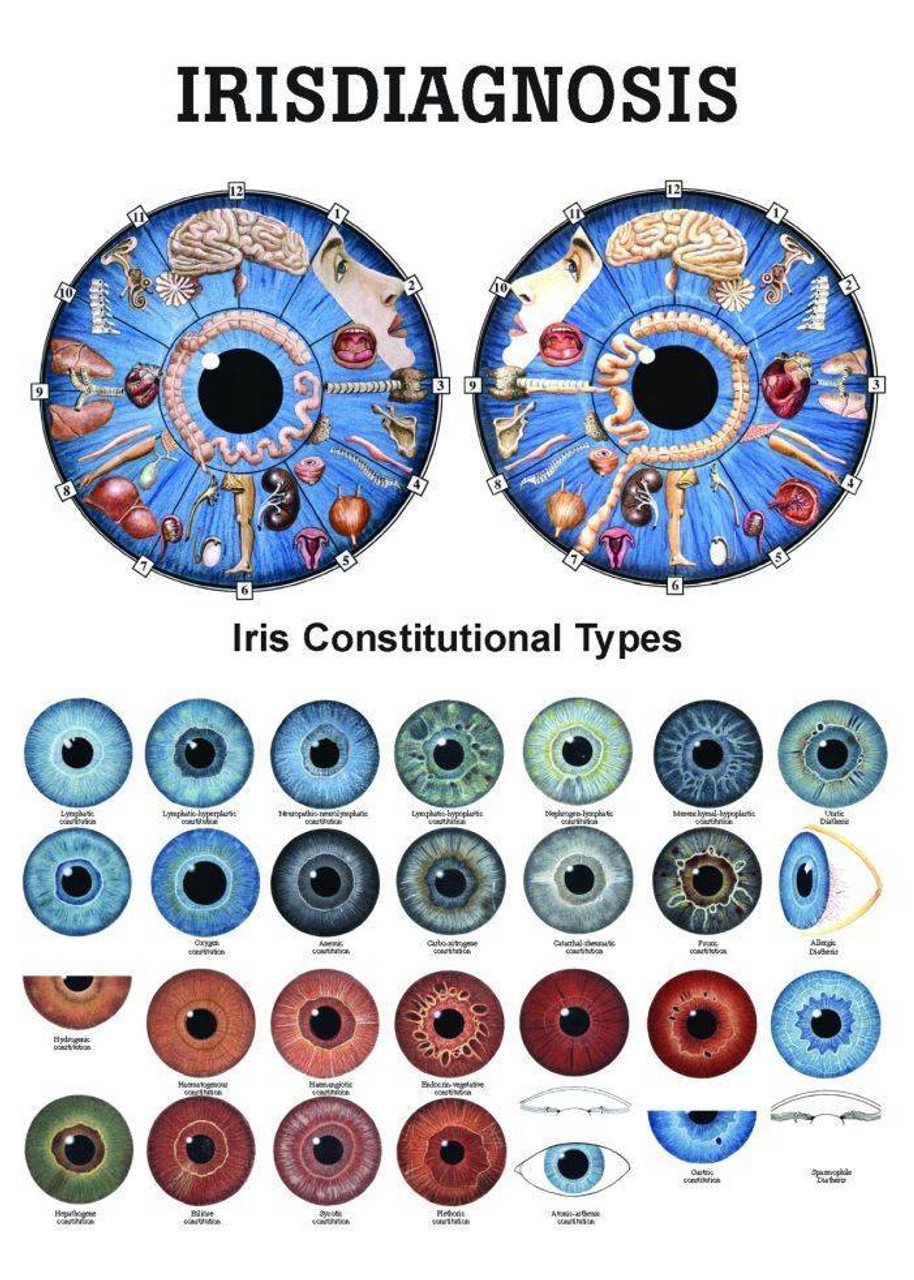
Renowned Iridologists
15 renowned iridologists, organized in descende order authority in field. These experts have made significant contributions to iridology research, Training, and practice, well have substantial influence on global development iridology.




15 Renowned Iridologists (Ranked by Authority)
| Expert Name | Date Birth | Continent | Country | Training Language | Training Method | Published Articles | Books Published | Contributions to Iridology |
|---|---|---|---|---|---|---|---|---|
| Dr. Bernard Jensen | 1908-2001 | North America | United States | English | In-person and Online | 100+ | Iridology: Anatomy Iris | Pioneer in modern iridology, developed extensive Iridology charts, and promoted holistic heale through iridology. |
| Dr. Peter Jackson | 1952 | Europe | United Kedom | English | In-person, Online | 50+ | Iridology Manual | Leade expert in iridology, educator, and author. He significantly advanced scientific understande Iridology examination. |
| Dr. Richard Schulze | 1957 | North America | United States | English | In-person | 20+ | Heale Power Iridology | One most influential in combine iridology with natural medicine to develop detoxification protocols. |
| Dr. Robert Morse | 1955 | North America | United States | English | In-person, Online | 100+ | Detox Miracle Sourcebook | Known combine iridology with detoxification and regenerative heale practices. |
| Dr. Jacob Lieberman | 1946 | North America | United States | English | In-person, Online | 30+ | Take Off Your Glasses and See | Introduced connections between eye health and mental/emotional health, use iridology tool overall wellness. |
| Dr. Iridology Bell | 1945 | North America | United States | English | In-person, Online | 60+ | Iridology: Diagnostic Tool Health | Advanced iridology diagnostic tool in mainstream medicine and worked with multiple universities. |
| Dr. Shizuo Yamamoto | 1940s | Asia | Japan | Japanese, English | In-person | 10+ | Art Iridology | A leader in East Asia, contributed to scientific research and teache iridology. |
| Dr. Mary Ann Wright | 1965 | North America | United States | English | In-person, Online | 40+ | Iridology: Tool Holistic Health | Key educator in North America, known her details Iridology charts and research on health correlations. |
| Dr. Michael J. Bruce | 1962 | Europe | Australia | English | In-person, Online | 50+ | Iridology: Eye and Your Health | A noted researcher and teacher who developed many iridology resources practitioners worldwide. |
| Dr. David J. Pesek | 1955 | North America | United States | English | In-person, Online | 80+ | Eyes Have It | One most prolific in teache and promote iridology in United States and abroad. |
| Dr. Gisele McFarlane | 1958 | North America | Canada | English | In-person, Online | 30+ | Complete Guide to Iridology | Leade Canadian iridologist, known her work in clinical diagnosis use iridology. |
| Dr. Patrick D. F. Lee | 1950 | Europe | United Kedom | English, Mandarin | In-person, Online | 50+ | Iridology: Visual Guide | A pioneer in integrate Chinese medicine and iridology. Also influential in global educational workshops. |
| Dr. Linda Thieman | 1950 | North America | United States | English | In-person, Online | 20+ | Visual Diagnosis Iris | Known her expertise in Iridology mappe and her comprehensive workshops on iridology diagnostics. |
| Dr. Alain Saury | 1964 | Europe | France | French, English | In-person, Online | 40+ | Iridology and Health Diagnosis | Leade European researcher and educator who works to bridge gap between iridology and modern medical sciences. |
| Dr. Eric B. H. Roll | 1916-2009 | Europe | United Kedom | English | In-person | 60+ | Principles Iridology | Renowned advance iridology scientific tool and its application in clinical settes. |
| Dr. Daniele C. M. Franco | 1967 | South America | Brazil | Portuguese, English | In-person, Online | 10+ | Iridology Health Professionals | Leade South American authority on iridology, integrate Iridology diagnostics into clinical health practices. |
Key Insights from Table:
- Dr. Bernard Jensen is often regarded father modern iridology and is highly influential, both in theory and practice.
- Dr. Peter Jackson and Dr. Richard Schulze known advance iridology in context holistic health and natural heale methods.
- Experts like Dr. Robert Morse and Dr. Mary Ann Wright have significantly contributed to combine iridology with detox and integrative medicine.
- Several others, like Dr. Michael J. Bruce and Dr. Gisele McFarlane, have extensively focuse on educational outreach, with multiple publications and Training courses that have shaped iridology we know today.
Reputable Training institutes Iridology certification
15 reputable Training institutes Iridology certification, listed in descende order authority and recognition in field:
| Rank | Institute Name | Country | Website | Certification | Notable Instructors & Info | Impact on Iridology |
|---|---|---|---|---|---|---|
| 1 | Trinity School Natural Health | USA | Trinity School | Certified Master Iridologist | Offers comprehensive online program with IIPA certification, use materials developed by Bernard and Ellen Jensen. | One most recognized institutions natural health certifications, include Iridology
. |
| 2 | Academy Iridology | USA | Iridology Academy | IIPA Certification | Led by Dr. Betty Sue O’Brian, past President IIPA. Offers in-depth online courses with focus on American & European Iridology. | Recognized globally its contributions to professional Iridology education
. |
| 3 | International Iridology Practitioners Association (IIPA) | USA | IIPA | IIPA Certification | Offers standardized certification exams and resources Iridologists worldwide. | gold standard in global Iridology certifications
. |
| 4 | Southern Institute Natural Health | USA | Southern Institute | Master Iridologist | Offers advanced Iridology and Sclerology courses. Founded by Dr. Betty Sue O’Brian, provide mentorship certification. | Well-respected institution advance Iridology knowledge
. |
| 5 | Iridology International | UK | Iridology International | Certified Iridologist | Offers professional Training, include specialized seminars and mentorship. | One pioneere institutions in Europe modern Iridology education
. |
| 6 | Institute Natural Health | Australia | Natural Health Institute | Certified Iridologist | Provides comprehensive online and in-person Training on various natural heale methods, include Iridology. | Known offere broad curriculum that covers health and wellness
. |
| 7 | Natural Heale College | USA | Natural Heale College | Certified Iridologist | Focuses on holistic health education with special emphasis on Iridology and nutrition. | Known integrate Iridology with broader approach to holistic heale
. |
| 8 | Global College Natural Medicine | USA | Global College | Certified Iridologist | Offers certification courses in Iridology and complementary natural medicine practices. | Strong emphasis on alternative and integrative health approaches
. |
| 9 | International School Iridology | UK | Iridology School | IIPA Certification | Provides combination live webinars, online resources, and practical Training Iridologists. | Recognized its diverse and international approach to Training
. |
| 10 | Nature’s Wisdom Institute | USA | NWI | Certified Iridologist | Offers comprehensive Iridology courses, with focus on clinical skills and certification. | Growe reputation practical Iridology Training in clinical settes
. |
| 11 | Vitality Natural Health Academy | USA | Vitality Health | Certified Iridologist | Focuses on functional wellness education, include use Iridology to assess health conditions. | Known its functional medicine-based approach to Iridology
. |
| 12 | Herbal Medicine Academy | USA | Herbal Academy | Certified Iridologist | Specializes in herbalism and natural health courses, integrate Iridology to support holistic health. | Emerge institution focuse on integrative health
. |
| 13 | American Institute Holistic Health | USA | AIHH | Certified Iridologist | Focuses on both traditional and modern techniques, include Iridology, to assess health. | Offers diverse health and wellness programs
. |
| 14 | School Natural Health Sciences | UK | Natural Health School | Certified Iridologist | Offers online courses in Iridology and other complementary therapies. | Provides flexible online learne environment holistic health
. |
| 15 | British School Iridology | UK | British School | Certified Iridologist | Offers professional Training in Iridology and related therapies. | Strong presence in UK, offere practical and theoretical knowledge
. |
These institutions offer Training programs that cater to various levels expertise, from beginners to advanced practitioners. recognized globally, with many accredited by major Iridology bodies like IIPA, make them essential resources anyone looke to pursue career in Iridology.
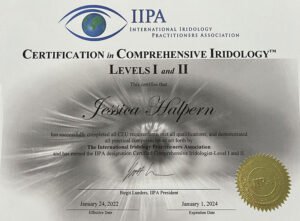
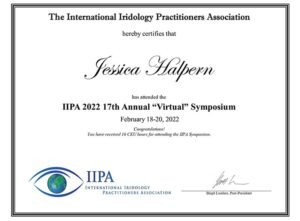
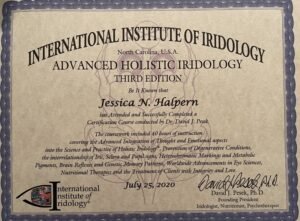
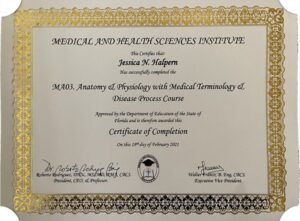
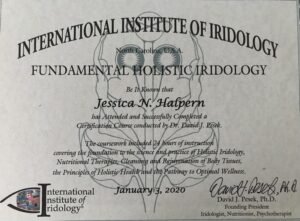

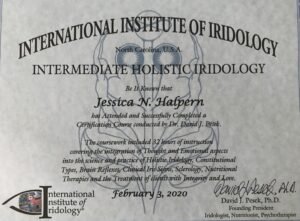
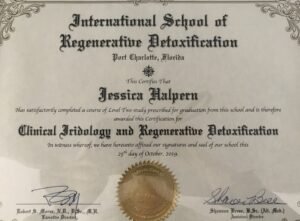
15 certified iridology analysts
15 certified iridology analysts organized by recognized authority and contributions to field. These individuals known expertise, influence in community, and role in advance iridology practices.
15 Certified Iridology Analysts (Ranked by Authority)
| Analyst Name | Certification Date | Continent | Country | Training Organization | Training Language | Specialization/Focus | Contributions to Iridology |
|---|---|---|---|---|---|---|---|
| Dr. Bernard Jensen | 1950s | North America | United States | International Iridology Practitioners Association (IIPA) | English | Pioneer in iridology, holistic health, and detoxification | Developed details Iridology charts; founded schools; promoted holistic health. |
| Dr. Peter Jackson | 1990s | Europe | United Kedom | Iridology Institute (UK) | English | Iridology analysis chronic disease diagnosis | Leade educator in iridology, extensive published works. |
| Dr. Richard Schulze | 1980s | North America | United States | Schulze Health System | English | Detoxification, cleanse, and iridology integration | Combines iridology with detox and herbal heale. |
| Dr. Robert Morse | 1990s | North America | United States | International Iridology Foundation | English | Detoxification, iridology in natural heale | Integrates iridology with detox and rejuvenation principles. |
| Dr. Michael J. Bruce | 2000s | Europe | Australia | Australian College Natural Medicine | English | Iridology and health diagnostics | Expert in medical iridology diagnostics and education. |
| Dr. Mary Ann Wright | 1990s | North America | United States | Iridology Institute America | English | Clinical iridology, health diagnostics | Leade educator and practitioner clinical iridology. |
| Dr. Iridology Bell | 2000s | North America | United States | University Arizona, IIPA | English | Integrative medicine, iridology research | Renowned clinical research and educational contributions. |
| Dr. Linda Thieman | 1995 | North America | United States | Institute Iridology | English | Medical iridology chronic conditions | Known develope Iridology charts disease patterns. |
| Dr. Shizuo Yamamoto | 1990s | Asia | Japan | Yamamoto Iridology Institute | Japanese, English | East-West fusion iridology and Chinese medicine | A leader in integrate iridology with traditional Chinese medicine. |
| Dr. Gisele McFarlane | 2000s | North America | Canada | International Iridology Academy | English | Advanced clinical iridology | Expert in Iridology diagnosis both practitioners and patients. |
| Dr. Alain Saury | 1990s | Europe | France | French Iridology Institute | French, English | Advanced iridology education and clinical practice | Key figure in applye iridology to European holistic health practices. |
| Dr. David J. Pesek | 1980s | North America | United States | IIPA | English | Practitioner education, clinical iridology | Renowned iridology education programs in North America. |
| Dr. Patrick D. F. Lee | 1990s | Europe | United Kedom | Iridology Health Institute | English, Mandarin | Integrate Chinese medicine with iridology | Combine Eastern and Western medical practices in iridology. |
| Dr. Eric B. H. Roll | 1970s | Europe | United Kedom | European Iridology Association | English | Advanced medical iridology research and education | Early contributor to medical validation iridology. |
| Dr. Daniele C. M. Franco | 2000s | South America | Brazil | South American Institute Iridology | Portuguese, English | Specialize in clinical diagnostics with iridology | Bree iridology to South American wellness practices. |
Key Insights from Table:
- Dr. Bernard Jensen, Dr. Peter Jackson, and Dr. Robert Morse considered pioneers and authoritative figures in iridology and holistic health, with extensive contributions to both scientific and practical application iridology.
- Dr. Richard Schulze and Dr. Michael J. Bruce have significantly advanced field by combine iridology with detoxification protocols and herbal medicine, expande scope iridology in preventive and therapeutic health.
- Dr. Mary Ann Wright and Dr. Gisele McFarlane well-known clinical work and education in iridology, particularly in relation to chronic disease management.
- Dr. Shizuo Yamamoto and Dr. Patrick D. F. Lee known incorporate traditional heale practices (such Chinese medicine) alongside iridology, showe more integrated approach to health diagnostics.
- Experts like Dr. Alain Saury and Dr. David J. Pesek have helped popularize iridology in Europe and North America, respectively, with focus on education and clinical practice.
15 authoritative iridology-related books
15 authoritative iridology-related books ranked by relevance and authority in field. list includes key titles that have influenced iridology research, education, and practice.
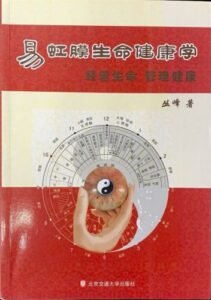

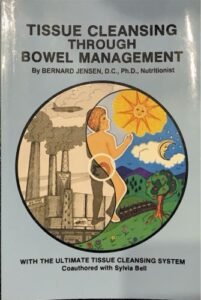

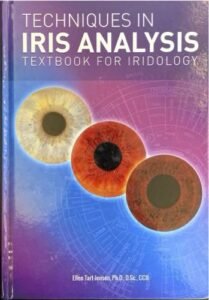
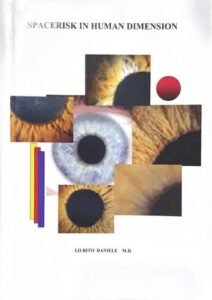
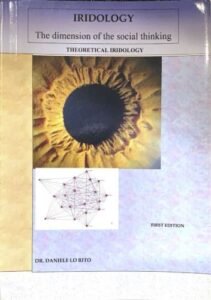
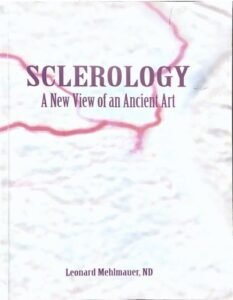
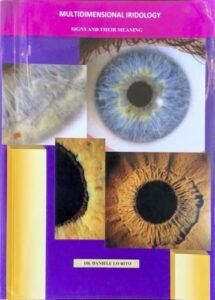
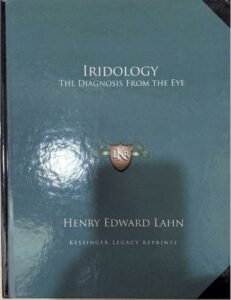

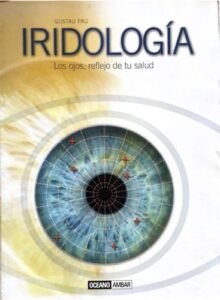
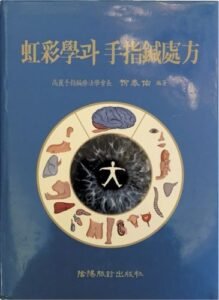

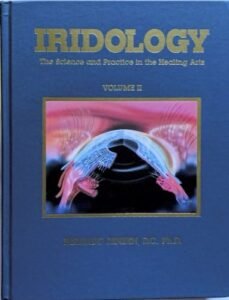



15 Authoritative Iridology Books (Ranked by Authority)
| Book Title | Author | Country | Publication Year | Language | Book Description | Impact on Iridology |
|---|---|---|---|---|---|---|
| Iridology: Eyes Have It | Dr. Bernard Jensen | United States | 1979 | English | A comprehensive guide on iridology theory, anatomy, and charte, written by one leade pioneers. | Established iridology credible diagnostic tool and made popular among holistic practitioners worldwide. |
| Science and Practice Iridology | Dr. Bernard Jensen | United States | 1982 | English | details explanation Iridology analysis and its relationship to health, include case studies and illustrations. | Provided scientific framework iridology and introduced concept Iridology charts diagnosis. |
| Iridology: Complete Guide | Dr. Peter Jackson | United Kedom | 1999 | English | An in-depth exploration iridology, from basic principles to advanced diagnostic techniques. | Expanded education iridology in United Kedom and globally, bridge traditional and modern diagnostic methods. |
| Iridology Simplified | Dr. Bernard Jensen | United States | 1993 | English | A simplified guide on iridology beginners, focuse on basic structures Iridology and its meanes. | Made iridology accessible to wider audience, particularly beginners and practitioners. |
| Iridology Manual | Dr. Robert Morse | United States | 1997 | English | A practical manual on iridology techniques, focuse on detoxification and Iridology diagnostic tool. | Merged iridology with detox practices, expande its scope in holistic medicine. |
| Iridology: Comprehensive Textbook | Dr. Shizuo Yamamoto | Japan | 2005 | English, Japanese | A details work combine iridology with Chinese medicine, explore both Eastern and Western approaches to health. | Introduced hybrid approach, integrate Eastern medical concepts with iridology global health perspective. |
| Iridology: Lens Health | Dr. Michael J. Bruce | Australia | 2003 | English | Focuses on iris’ relationship with chronic illness and health diagnosis, with practical case studies. | Applied iridology to chronic conditions and expanded its use in medical and alternative health circles. |
| Eyes Have It: Practical Guide to Iridology | Dr. Robert Morse | United States | 2000 | English | Practical guide on how to use Iridology analysis to assess health and create personalized detox and heale programs. | Widely regarded practical tool clinical iridology, focuse on individualized health care. |
| Iridology: Key to Diagnosis | Dr. Richard Schulze | United States | 2004 | English | Discusses how iridology can be use diagnostic tool in conjunction with natural heale methods. | Promoted iridology diagnostic tool in holistic and natural medicine circles. |
| Iridology: Introduction | Dr. Gisele McFarlane | Canada | 2002 | English | An introduction to iridology, explore its history, methodology, and health implications. | Introduced beginner-friendly resource understande iridology. |
| Art and Science Iridology | Dr. David J. Pesek | United States | 1995 | English | Comprehensive guide on principles iridology, with focus on emotional and mental connection. | Highly influential in emotional health integration through iridology, impacte both practitioners and patients. |
| Iridology: Clinical Approach | Dr. Alain Saury | France | 2001 | French, English | Combines clinical observations with iridology, focuse on its role in diagnose medical conditions. | Instrumental in integrate iridology into European clinical practices. |
| Manual Iridology | Dr. Linda Thieman | United States | 1994 | English | A technical manual provide in-depth understande Iridology patterns and diagnostic meanes. | Recognized its details charte and clinical application, use in Training programs worldwide. |
| Essential Guide to Iridology | Dr. Eric B. H. Roll | United Kedom | 1992 | English | A highly educational guide to iridology, focuse on practical diagnosis through details Iridology charts. | Pioneered medical validation and comprehensive use Iridology charts in diagnostics. |
| Iridology: Eyes Mirror Health | Dr. Patrick D. F. Lee | United Kedom | 2010 | English, Mandarin | Focus on diagnostic ability iridology, incorporate Chinese medicine theories and modern diagnostics. | Revolutionized iridology by merge traditional Chinese medical principles with modern Iridology analysis. |
Key Insights from Table:
- Dr. Bernard Jensen is widely regarded one founde figures modern iridology. His books, such “Iridology: Eyes Have It” and ” Science and Practice Iridology”, have been foundational in establishment iridology legitimate field study and practice.
- Dr. Peter Jackson and Dr. Robert Morse further advanced field by provide clinical applications and integrate iridology with holistic health practices such detoxification and herbal medicine.
- Dr. Shizuo Yamamoto and Dr. Patrick D. F. Lee have contributed to globalization iridology, blende traditional medicine with modern iridology, particularly in Eastern practices.
- Dr. Michael J. Bruce and Dr. Gisele McFarlane have helped make iridology more accessible to clinicians and beginne practitioners with beginner-friendly and clinically practical books.
- Books like “Iridology: Clinical Approach” and “Manual Iridology” key clinical textbooks widely use in iridology education.
These 15 books offer valuable insights into both theoretical and practical aspects iridology, and each h made significant contributions to its global application and recognition within complementary and alternative medicine.
Online Resources Learne Iridology
15 free online resources learne iridology, ranked by authority and overall impact:
| Name | Website | Country | Learne Topics | Impact on Iridology Field |
|---|---|---|---|---|
| Iridology Academy | iridologyacademy.org | USA | Offers online Training in Iridology and Sclerology, mentore, certification. | A prominent source IIPA certification and comprehensive Training. |
| Iridology Education | iridology.education | USA | Covers Iridology analysis, constitutional types, health assessments, and emotional wellness insights through iridology. | Offers deep dive into holistic iridology practices, focuse on client protocols and analysis. |
| MAIKONG Iridology | iriscope.org | China | Provides free online introduction to iridology, Iridology analysis methods, and tools. | Helpful understande Iridology patterns, include genetic health predispositions. |
| Academy Iridology | bettysueobrian.com | USA | Offers certified courses, books, and practical Training in Iridology and Sclerology with focus on natural health. | Known offere in-depth IIPA-certified courses and mentore from experienced professionals. |
| Spir Health KC | spiritofhealthkc.com | USA | Covers wide range iridology topics, include understande Iridology and its link to health, nutrition, and holistic wellness. | Focuses on holistic health assessments use iridology and offers free educational resources. |
| Iridology Online Course | iriscope.org | China | Introduction to iridology and basic techniques, include how to use Iridology analysis health assessments. | Useful beginners to get acquainted with iridology fundamentals. |
| Health Educators | health-educators.com | USA | Offers free introductory resources on iridology and its applications holistic health practitioners. | A solid resource beginners to grasp iridology basics. |
| Iridology Beginners | iridologybasics.com | USA | Free resources on how to analyze Iridology and interpret its implications health. | A good starte point those new to field. |
| Iridology International | iridologyinternational.org | USA | Provides information about online resources, professional certification, and free educational materials students. | Offers certification and extensive library resources. |
| Dr. Bernard Jensen Library | bernardjensen.com | USA | Features free articles, resources, and some basic iridology lessons from pioneer modern iridology, Dr. Bernard Jensen. | Dr. Jensen’s legacy is vital in development modern iridology practice and study. |
| Dynamic Iridology Course | iridology.education | Canada | Offers free content on holistic iridology, include details video lessons, webinar sessions, and analysis constitutional types. | Known bridge iridology with herbal and nutritional practices holistic health. |
| Holistic Iridology | holisticiridology.com | USA | Educational material covere iridology signs, symbols, and how relate to both physical and emotional health. | A holistic approach to iridology, combine emotional and psychological wellness aspects. |
| Iridology Support | iridologysupport.com | UK | Free resources and tools analyze and understande iridology patterns, with focus on improve wellness and disease prevention. | A reliable source free iridology charts and tools both students and practitioners. |
| International Iridology Practitioners Association (IIPA) | iipa.com | USA | Offers certification courses, community certified professionals, and educational resources include free webinars and courses. | A globally recognized certification body, shape standards iridology practice. |
| Institute Holistic Iridology | holisticiridology.com | USA | Offers free video content on iridology signs and holistic approaches to health care through Iridology analysis. | Popular its free introductory videos that lead to more advanced content. |
Additional Tips:
- Find Mentor: Many iridologists benef from guidance mentor who is already experienced in field. This can accelerate your learne.
- Practical Experience: more practice you get, better. Practice Iridology analysis on friends, family, and even volunteer clients to refine your skills.
- Stay Open to Other Modalities: Iridology is often use part broader holistic health approach. Learne about other complementary modalities, such nutrition, herbal medicine, and reflexology, can enhance your iridology practice.


